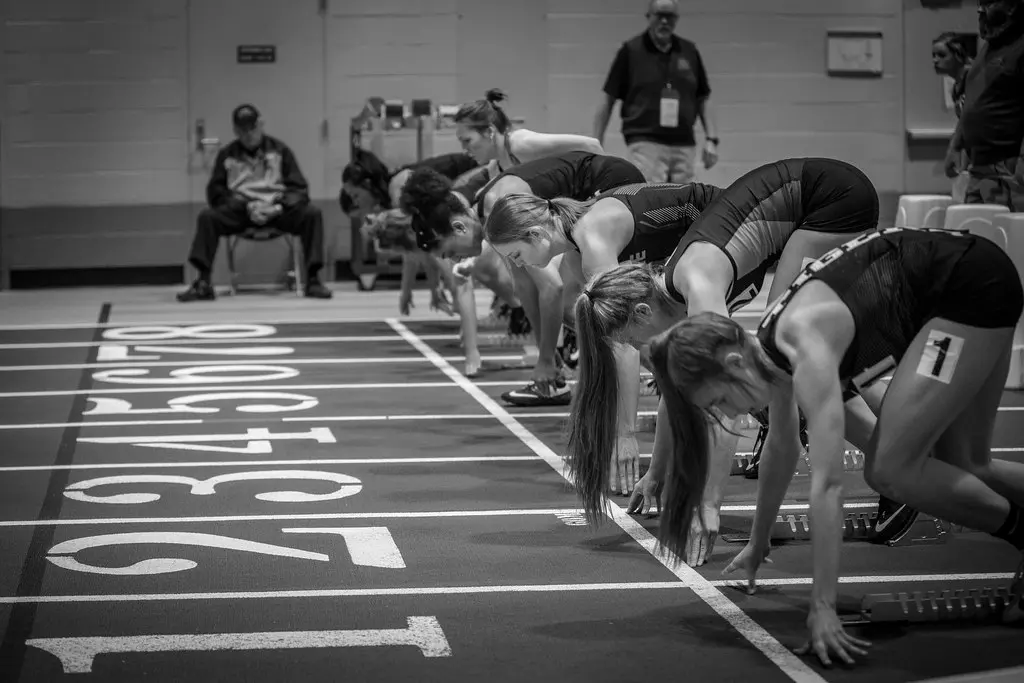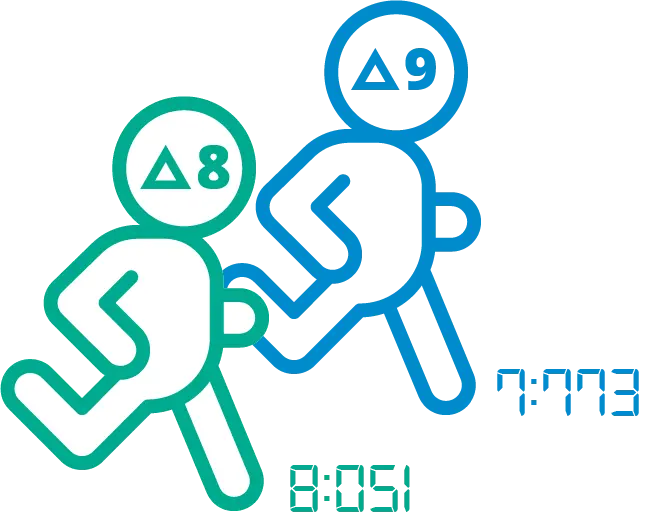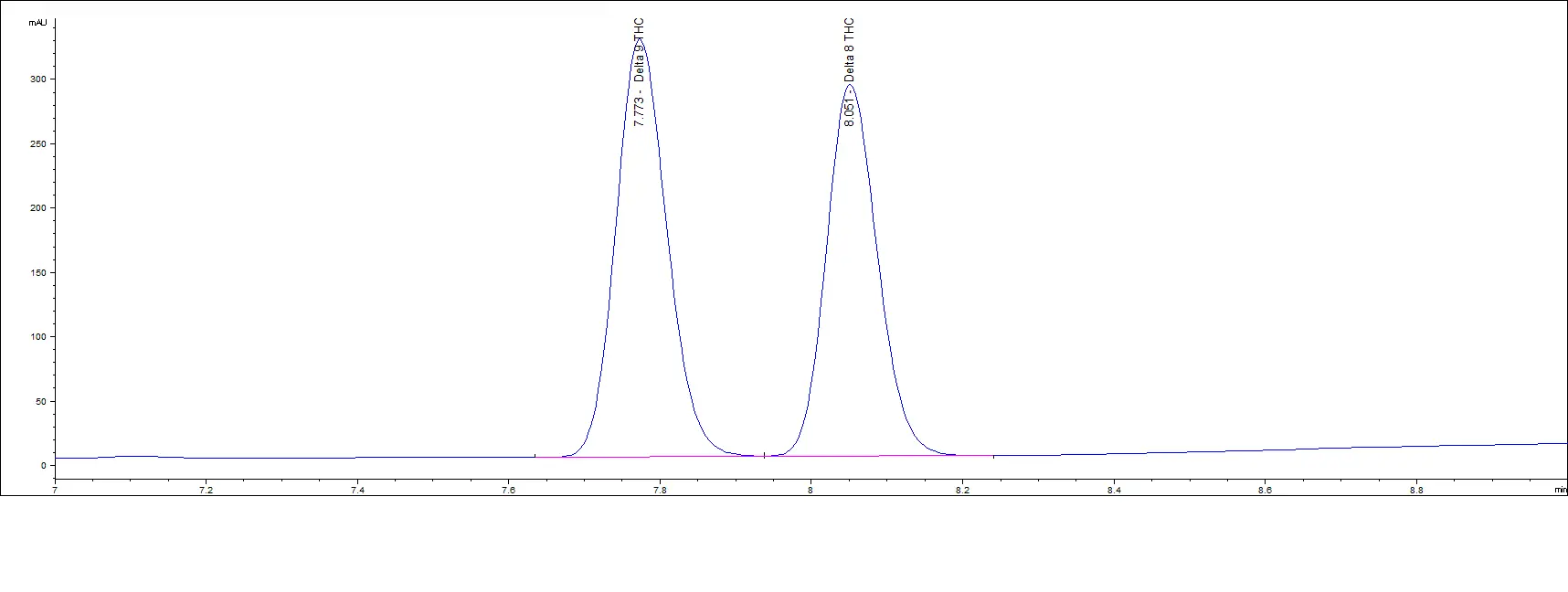Introduction
In 2020, the hemp industry saw the rise in popularity of hemp-derived Delta-8 THC. From vape cartridges to infused products, Delta-8 THC has become the hot new cannabinoid in the hemp marketplace.
When we perform cannabinoid potency analysis at Botanacor, we are often asked to look for Delta-8, as well as Delta-9, and many times the client is confused when we report both cannabinoids in their sample.
This article takes a layperson’s look at the steps we use to identify cannabinoids and how we can accurately tell the difference. For a deeper dive into the chromatography of Delta-8 vs. Delta-9, read our companion technical article.
Background
How is Delta-8 THC made?
The DEA released their Interim Final Rule, stating, “all synthetically derived tetrahydrocannabinols remain schedule I controlled substances.” Delta-8 is included on the DEA’s Controlled Substances list as well (see page 17).
Some legal opinions state that since Delta-8 THC comes from hemp, it does not fall under the DEA’s definition of “synthetic”. This argument will most likely go on for a while due to differences in language and jurisdiction between the USDA (Farm Bill) and the DEA Controlled Substances List.
Chromatography: A race against time… and distance
When a laboratory analyzes a sample for cannabinoid content, they employ a technology, called chromatography. It is widely used throughout the world to analyze pharmaceuticals, agricultural products, and beyond. At a high-level, chromatography uses time and distance to determine the identification and concentration of each cannabinoid.
To understand the concept of chromatography, we will use the analogy of running a race.
Timing is everything
Testing for cannabinoids is almost like watching a track and field event. When a sample is placed into an HPLC, the instrument used for testing, the cannabinoids line up to the starting line just like a sprinter waiting for the starting gun to go off. When the race begins, the cannabinoids “race” down the track, and as they cross the HPLC’s finish line, they are timed. In chromatography, this is called the “retention time”.

Too close to call? Let’s see the instant replay.
While all cannabinoids are sprinters in our race analogy, some are faster than others. Two contestants in particular, Delta-9 and Delta-8, are so evenly matched, they look identical. So much so, a photo finish instant replay is required to see who got to the finish line first.


A laboratory with a deficient methodology and equipment will only see one sprinter and say it is, “too close to call” and report one race time. “I only see Delta-8 crossing the finish line, so that is all I’m going to report. Go Delta-8!”

A laboratory with the correct methodology and equipment will look to the “photo finish” and be able to see that there are two sprinters and know their exact race times.
Analyzing Delta-8 THC
Our Delta-8 and Delta-9 competitors are in the same “race class”. In chemistry, they are isomers. This means that they are practically the same thing except for the placement of a double bond. Can you see the difference below?

When we test a hemp sample, the chromatography gives us the “race times” for each cannabinoid. We use those times to compare against our reference standards. Reference standards are pure cannabinoids of a known concentration. Think of reference standards as the sprinter’s average running pace. For example, Delta-9 is known to run a 7:773 second race. We use that time to compare to the current race.
We know the exact retention times for each cannabinoid that we test for and can tell the difference between them.
When a race is to too close to call, race officials will look to the photo finish to see who got to the finish line first. In chromatography, we use ultra-violent visualization. Our Delta-9 and Delta-8 sprinters are neck and neck across the finish line, so we analyze their wavelength on the UV spectrum to determine who is who.
By performing spectral analysis, we can accurately confirm the identity of Delta-9 with a 99.85% match and Delta-8 THC with a 99.98% match.
Conclusion
The process of isomerizing Delta-8 THC from CBD isolate almost always creates a certain amount of Delta-9 THC. With the proper methodology, a competent laboratory can let you know this.
Inexperienced hemp testing laboratories with deficient methodologies cannot accurately determine the presence of Delta-9 THC in Delta-8 THC products. While this might seem advantageous, the potential legal ramifications of selling a non-compliant product could open your business up to legal exposure.
Botanacor Laboratories is widely recognized as the trusted leader in hemp and cannabinoid product testing and has been routinely testing Delta-8 for years. If Delta-9 THC is present in a submitted sample of Delta-8 THC, our validated testing framework gives us:
- Complete separation between the chromatographic retention times of Delta-8 THC and Delta-9 THC.
- Secondary confirmation via UV spectral analysis.
With the rise in popularity of cannabinoids like Delta-8 THC, getting the right analytical answer for your products is imperative. Botanacor can assist you with industry-leading science to help you build your business. Give us a call at: 888-800-8223 ext. 1

